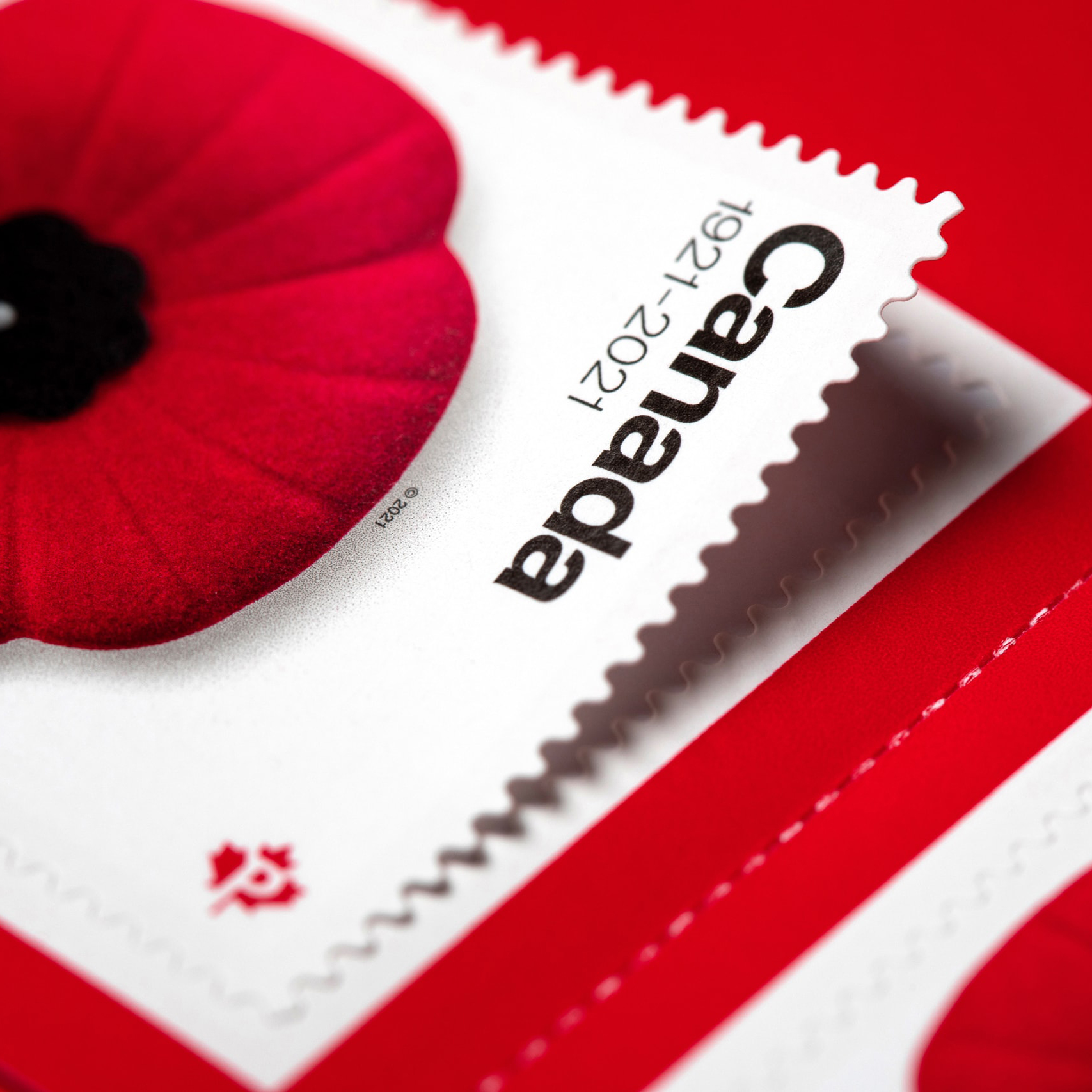

Blair was born in Toronto, Ontario, in 1970, to British immigrants, Ann and Bill Thomson, during a time when the country was riding a wave of prosperity, social change and a new found independent spirit. The visual language at this time embraced the modern age and was impossible to ignore. Trailblazing work, often a collaboration between Canadians and European designers, introduced an intellectually simple approach to design. It was this approach that subliminally influenced Blair, even in his early years.
Around the age of 7, Blair was given a small stamp collection, a gift that would have a significant influence over his young mind. Blair was mesmerized by the use of imagery, colour, space and typography. These tiny pieces of perforated paper excited him and in particular the stamps whose design aesthetic was more restrained, conceptual in nature, and somewhat abstract. Of particular interest were the Canadian stamps for the Montréal Summer Olympics, with their metallic backgrounds and graphic symbolism. This early fascination with stamp design evolved into a greater awareness of the use of design in the cultural world around him. Blair began to understand that design, and the application of design in brands and communications, was a powerful thing that helped to build stronger allegiances with its audience. This awareness had a profound effect, so much so, that by the age of 13 he knew that he wanted to become a designer.
During his teenage years, Blair and his family moved to the UK, leaving Canada behind. Living on the south coast of England, he studied art and design at college in Portsmouth. His first employment opportunity was within the marketing services department of a large PLC in London. Not the most glamorous start to his design career, but it was here that he became exposed to corporate design, signage, display, exhibition, point of sale, photography, and advertising. By the age of 26 Blair decided to use this experience to start his own design practice, and founded Believe in, having relocated to the South West coast. He began working with a handful of local clients, before gradually gaining a reputation and the opportunity to attract larger regional, national and international clients in the years that followed.
In 2012, being an early adopter of social media, Blair began experimenting by posting the occasional stamp image from his ever growing stamp collection onto his personal Instagram account. To his surprise, these posts garnered a lot of love. Enough to inspire a new curated account, dedicated solely to graphic stamps, that he named @graphilately. The account’s content was somewhat niche for its time and attracted the attention of the Instagram organization, growing the followers to a level of hyperbole in just a few months. There followed several high profile articles and features on @graphilately, including one in the New Yorker.
In early 2013, Blair’s father died unexpectedly at the age of only 68. Later in the same year, his father-in-law also passed away, at just 65. This catastrophic year had a profound impact on his own young family. It was at this defining point that he seized the opportunity to relocate his family to his birthplace of Canada. On the eve of their flight to Toronto, Blair received an email from renowned design publishers Unit Editions, expressing an interest in producing a book on graphic stamps, it felt like a good omen. Shortly after, he became the co-author (with good friend and collector Iain Follett) of Unit Editions’ first Archive Series book [Unit 24], Graphic Stamps.
Now back in his homeland of Canada, Blair was keen to see more of the work he’d felt an affinity with since childhood. He found that whilst the names of some of the designers who had led this creative revolution were celebrated, as were some of their more famous projects, the picture was far from complete. For every Montréal Olympics, Expo67 or Canadian National Railways, there were hundreds of projects that were either impossible to find, or misrepresented through poor quality images online or in old publications (often black and white). Some work had been preserved in a very small number of academic institutions, but these collections were not generally accessible to the public (or at least not very easily). It was at this point that that Blair felt an inner calling, a civic duty, and he made it his mission to do something that nobody had done before. For himself, for his country, and for the rest of the world to appreciate and learn from. Canada Modern was born.
From this point on he began to build on his modest collection. This involved heavy research, and a relentless pursuit to locate materials and information, both online and through physical stores, markets, and auctions. Much of this work is still extremely rare, but little-by-little, a more respectable collection began to emerge, with many items travelling long haul to return to Canadian soil.
Much of Canada Modern’s early success boils down to the relationships that Blair has developed with leading figures from the period, many of whom offered their time and guidance, together with access to their own personal collections. More familiar names such as Burton Kramer FGDC, Stuart Ash FGDC, Fritz Gottschalk FGDC, Raymond Bellemare, all offered support and became personal friends in the process. Some, perhaps less familiar names, such as Glenn Fretz, Anthony Hobbs, George Roth, Margrit Kapler, Wei Yew also pledged their time and encouragement. Designers who worked within some of the bigger studios, also shared their stories and became a further source of kinship and reference. Where key people were no longer living, relatives and former colleagues obliged their valuable time and memories, to help fill in the gaps.
“We cannot find the way forward without clear knowledge of where we began. Canada Modern provides an invaluable service to students, design practitioners and historians through its online, accessible collection of modern Canadian graphic design.” Burton Kramer
The online collection, which is shared at canadamodern.org, represents just a small fraction of the physical archive. Digitizing and researching each artefact is a time consuming exercise, and Blair strives to maintain quality and very high standards. A major boost to the physical archive came via Stuart Ash, the celebrated designer of the Centennial symbol. His pioneering firm Gottschalk+Ash International was acquired by Toronto-based Entro Communications in 2011, and through both Stuart and Entro’s cooperation, Blair was given permanent custodianship of the surviving G+A archives, which includes many pieces that have not been displayed in over 40 years.
“Canada Modern captures the heart of our national design story, preserving its integrity for generations to come. I am very proud to have my work and its legacy included. The digitization of the Gottschalk+Ash archive is a tremendous and extremely valuable undertaking. Canada Modern is amplifying the library of great Canadian graphic design and ensuring it remains accessible to a broad audience while being presented in a very relevant format.” Stuart Ash
Whilst Blair invests a lot of his time to the archive, he is also committed to helping and supporting others in his mission. Blair held an associate producer role on Greg Durrell’s feature length documentary film ‘Design Canada’, that also celebrates this important period. In 2021 Blair was invited to take part in DesignTO and curated a small Canada Modern exhibit that was open to the general public. He believes that providing access to the physical artifacts creates a magical connection that can only be experienced in person, so the plan is to exhibit more in the future. Since 2020 Blair has guest lectured at the School of Visual Arts, New York on the subject of Canadian graphic design history and the International Typographic Style.
Alongside his archival efforts, Blair’s design practice, Believe in, remains a constant in his day-to-day life. The original UK studio, continues working with its long term client base, but it is the Canadian studio that has began to grow in reputation and workload. A key client is Canada Post, where Blair has the honour to design stamps, stamp products and guidelines for his country — stamps were the catalyst for Blair’s exposure to graphic design, so it goes without saying that this is dream work for him. Other clients include Canadian advocacy group, FRIENDS (formerly Friends of Canadian Broadcasting), Virsix Games, Québec-based fashion retailer Aubainerie, and kids fashion label Petit Lem to name a few.
Blair supports and contributes to all of Canada’s design associations, which includes regular guest posts, interviews, exhibitions and video content. In 2020, Blair, like many of his design heroes of the past, became a member of the board of the Advertising and Design Club of Canada (ADCC).
Blair lives and works in Mono, Ontario with his wife Jo, sons Zachary and Dexter, and his dog Zola.